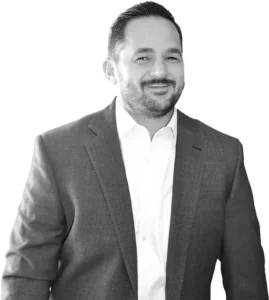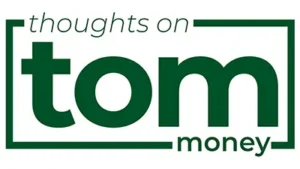The Lunch Bunch
If you worked at The Bahnsen Group, you’d know that Sean Latimer and I eat lunch together just about every day (somewhere Joleen Bahnsen is smirking as she reads this). We are blessed at The Bahnsen Group to have a very tight-knit, family-like culture. Sharing lunch together is a time to bounce ideas off one another, share best practices, and problem solve. I learn a lot from these lunchtime conversations, and I am a better advisor for it.
This week, during one of these lunchtime discussions, Sean shared an idea for a topic that he suggested we discuss here on Thoughts On Money [TOM], and today, we will do just that. Sean premised his topic recommendation with a story…
On Saturday, Sean took on a house project in which he nearly bit off more than he could chew. With aspirations to organize his garage and create more storage space, Sean decided to install ceiling racks. He researched the best product for the job and reviewed the expected installation time – 4 hours. In his mind, he thought it would be simple enough, so onward, he went. When he was about 8 hours into the “4-hour job,” he realized it wasn’t as simple as he may have assumed. He joked about how his father-in-law checked-in a few times to see how it was going, and Sean replied with quick affirmations that the project was going well, but in the back of his mind, he was feeling a bit in over his head. Thankfully, in the end, after a timeline that was about twice as long as expected, the project was completed. Sean’s first reaction as he crossed the finish line, “Why in the world didn’t I hire a professional!?”
On a side note, I will say this was a good story for me to hear, as I intend to get the same racks installed at my house, but based on Sean’s experience, I most definitely won’t be going the DIY (do-it-yourself) route.
A Lesson Learned
Sean carried on from this story to explain to me the key takeaway or life truth he gathered from all of this – it’s often best to hire a professional when you have a task at hand that is outside of your expertise or core competencies. Sometimes in life, you’ve just got to stay in your lane. We discussed the DIY investors out there, and how they will come up against some of the same challenges and anxieties, he experienced while installing his garage racks, although with perhaps much more serious consequences involved. Sean and I agreed that it would not be impossible for an investor to create a successful DIY plan and portfolio, but it was more of a question of whether it is worthwhile to set out on that journey. The time, the resources, and the emotional fortitude it would take to do this successfully are not for the faint of heart. With that said, today, we will jump into the challenges behind being a DIY investor.
My Money, My Emotions
For most of us, our nest egg, our savings, our balance sheet, or whatever you’d like to call it, represents so much more than just a dollar figure. It represents our hard work, our sacrifice, our diligence, etc. It’s a culmination of so much more than we could even describe. It’s emotional. How could it not be?
To add fuel to this emotional flame, many of us also invest our life savings in assets that fluctuate in value daily. We are expected to endure this rollercoaster as we watch this metric (our portfolio balance) representing our blood, sweat, and tears being re-priced every second of the day. Markets go up, markets go sideways, and markets go down without always providing a clear reason for why they are doing so or what they plan to do tomorrow.
Perhaps this is why investing is so hard. There is a lot on the line, and we are so emotionally invested when it comes to our own money. A DIY investor doesn’t have the luxury of disengaging, and the buck stops with them.
A friend of mine texted me this week. He’s a DIY investor. He shared some of his November results (November 2020 being one of the best months in market history) and expressed his anxieties about what he should do next. His intuitive belief was that “what goes up, must come down,” and he felt inclined to start making adjustments in his portfolio based on the November results. He reached out to me because he wanted some guidance. My response? “Hand over the responsibility to an advisor you trust and go have fun.” My friend has a family, and he has hobbies, he has a business – all of these things demand his time, energy, and emotions. It might seem like a “canned” advisor answer to reply with the advice of “hire an advisor,” but that is my honest, heartfelt answer. This baton pass of responsibilities would allow him more time to focus on what’s important.
We’ve all worked hard to get where we are financially, and our finances are tightly woven together with our emotions – there is a deep connection here. This is a connection that can’t easily be broken, and one that shouldn’t be. Collaborating with an advisor allows us to remove the emotions and reallocate our time and focus elsewhere.
Costly Mistakes
The late great Bear Bryant, head coach of the Alabama football program for nearly 25 years, once said, “Defense wins championships.” This quote also rings true in investing. Often what you avoid investing in or a strategy you avoid deploying can be just as important as what you actually execute on. I call this defense.
Many of the new client relationships we start at The Bahnsen Group are with investors transitioning from other advisors, other strategies, or a DIY plan they were self-directing. Unfortunately, more often than not, the front-end heavy-lifting is unwinding some of the previous construction. This comes in all shapes in sizes, and it could be surrendering an unneeded insurance policy or undoing some contributions that had negative tax consequences the client was not aware of. There is that old adage of measure twice and cut once, and as a DIY investor, one might not always know the right measurements for their situation.
It’s The Little Things
On the cover of James Clear bestselling book, Atomic Habits, it says, “tiny changes, remarkable results.” Throughout the book, Clear provides research after research about how great teams and great individuals achieve greatness by making small marginal changes over time that add up to make a BIG difference. One of those case studies is the San Antonio Spurs, one of the most successful basketball teams over the last couple of decades and also my personal favorite team when I was growing up (I was a big David Robinson fan). When talking about the Spurs organization, Clear provides many examples of the little things they do that differentiate them, but I think this Jacob Riis quote posted in their locker room says it all, “When nothing seems to help, I go and look at a stonecutter hammering away at his rock, perhaps a hundred times without as much as a crack showing in it. Yet at the hundred and first blow it will split in two, and I know it was not that last blow that did it—but all that had gone before.”
The Spurs players and staff work hard, and they don’t expect every drop of sweat to reflect an immediate success or even noticeable change; they know it all adds up in the end. As a financial planner, I will tell you that the plans I develop for my clients are exactly the same. We are looking for little opportunities and edges to constantly improve on tax efficiency, cost-effectiveness, enhancing returns, etc. As a DIY investor, unfortunately, you don’t know what you don’t know, and many DIY investors believe their job is done after choosing their investments. Financial planning is about so much more than just portfolio design, and although that’s a part of the process, it is not the whole process.
Compounding Knowledge
This is where I, as an advisor, gain an advantage over the DIY investor. I spend my entire workday, much of my free time reading, my lunchtime discussions, and sometimes I even wake up in the middle of the night to take notes all on the topic of personal finance. I eat, breathe, and sleep this stuff. Constantly thinking of ways to improve on my current beliefs and strategies and working through different client situations to solve unique obstacles in a unique way,
As I mentioned in the beginning when recollecting my conversation with Sean, we both agreed that it is not impossible for someone to be successful at doing-it-yourself, it just seems like a difficult undertaking, and it might feel impossible. Much more difficult than that of hanging some ceiling racks in the garage.
Knowledge compounds. If you find a good advisor that has committed themselves to be the best craftsman of their trade, then you will find that you will glean much more value out of that relationship and advice than you will ever spend on it. Most importantly, you then get to redeploy that research time, portfolio/plan design time, and your emotional energy to something that is more important to you.
Does this mean that you just completely disengage from your finances? Heavens no. I can speak for our clients; specifically, they greatly appreciate the content our group creates, they ask great questions, and we have meaningful conversations around what’s important to them and how to tailor a plan that best fits their situation. We, as advisors, prefer this – we welcome engagement.
The Podcast!
Well, I will wrap us up here. I hope you enjoyed the discussion today, and I want to invite you to listen to the Thoughts On Money [TOM] Podcast where Sean Latimer and I discuss each article, taking a deeper dive into the topics and stories discussed. We always love to hear from you, so please feel free to email me at with any questions or comments.
And, of course, I will be back next week with more of my Thoughts On Money.







